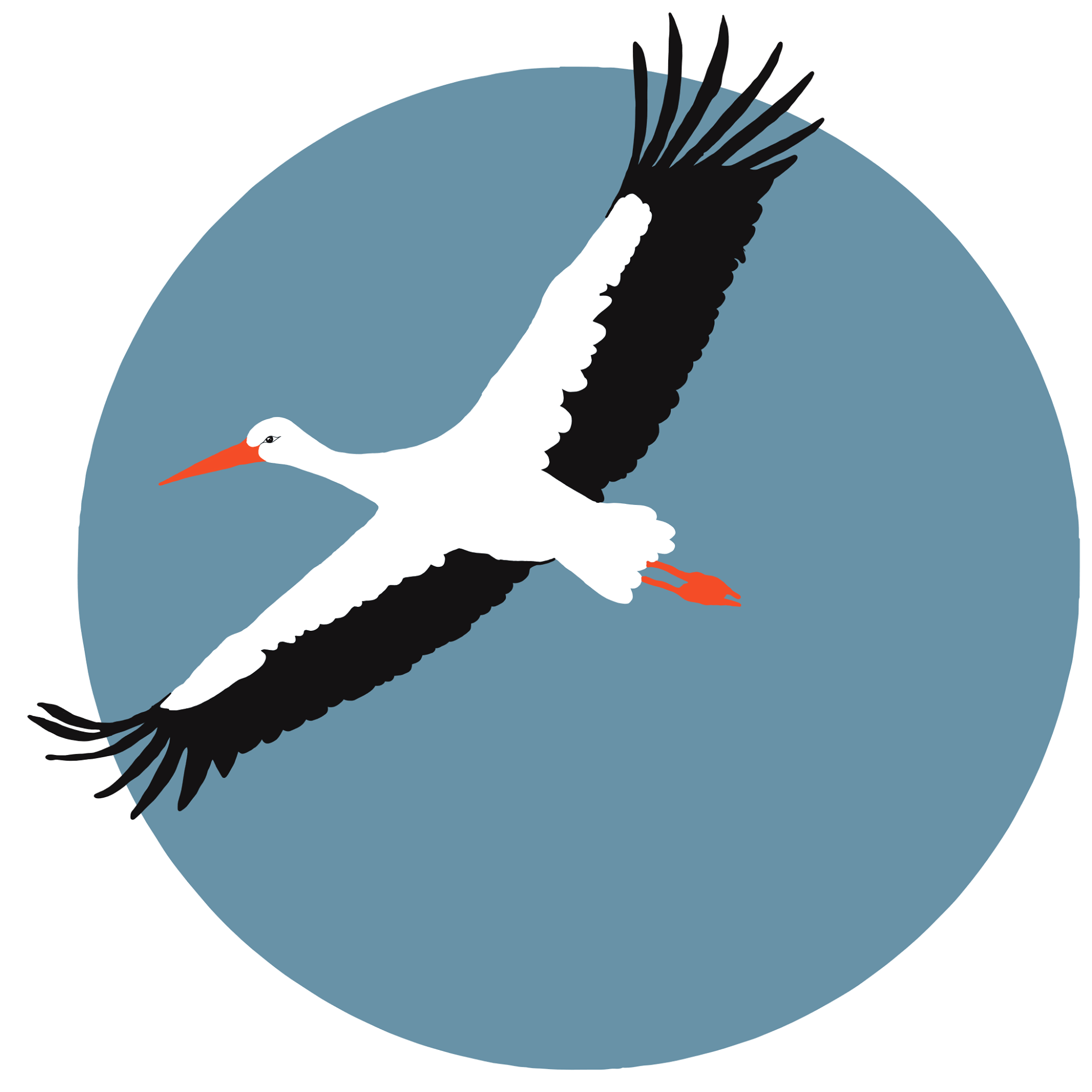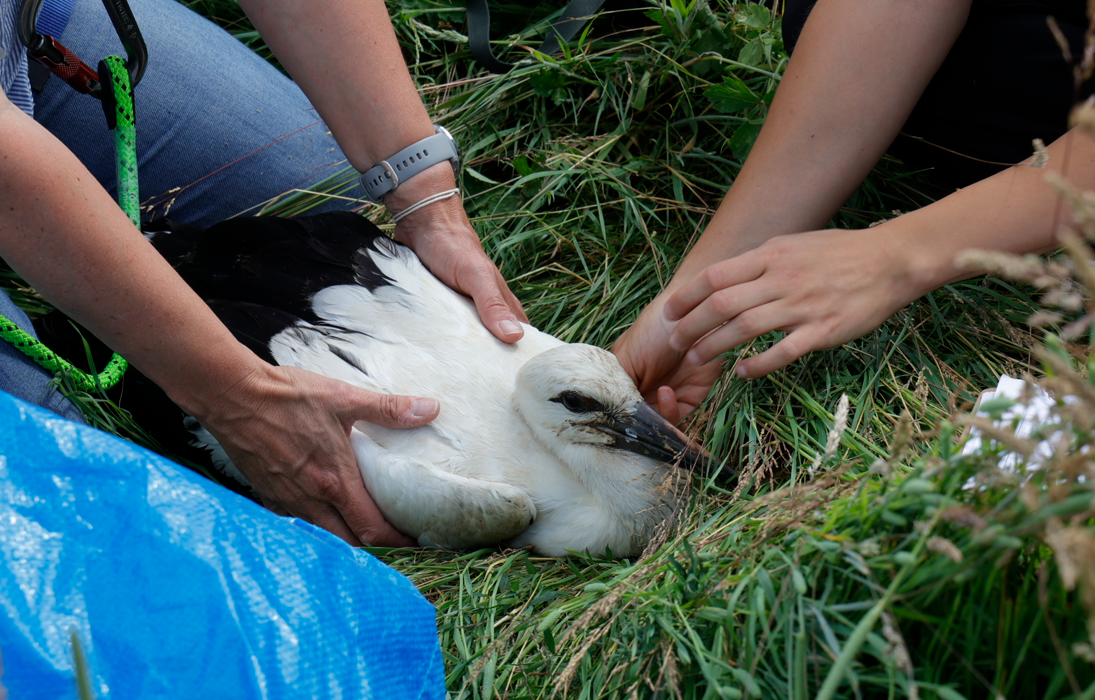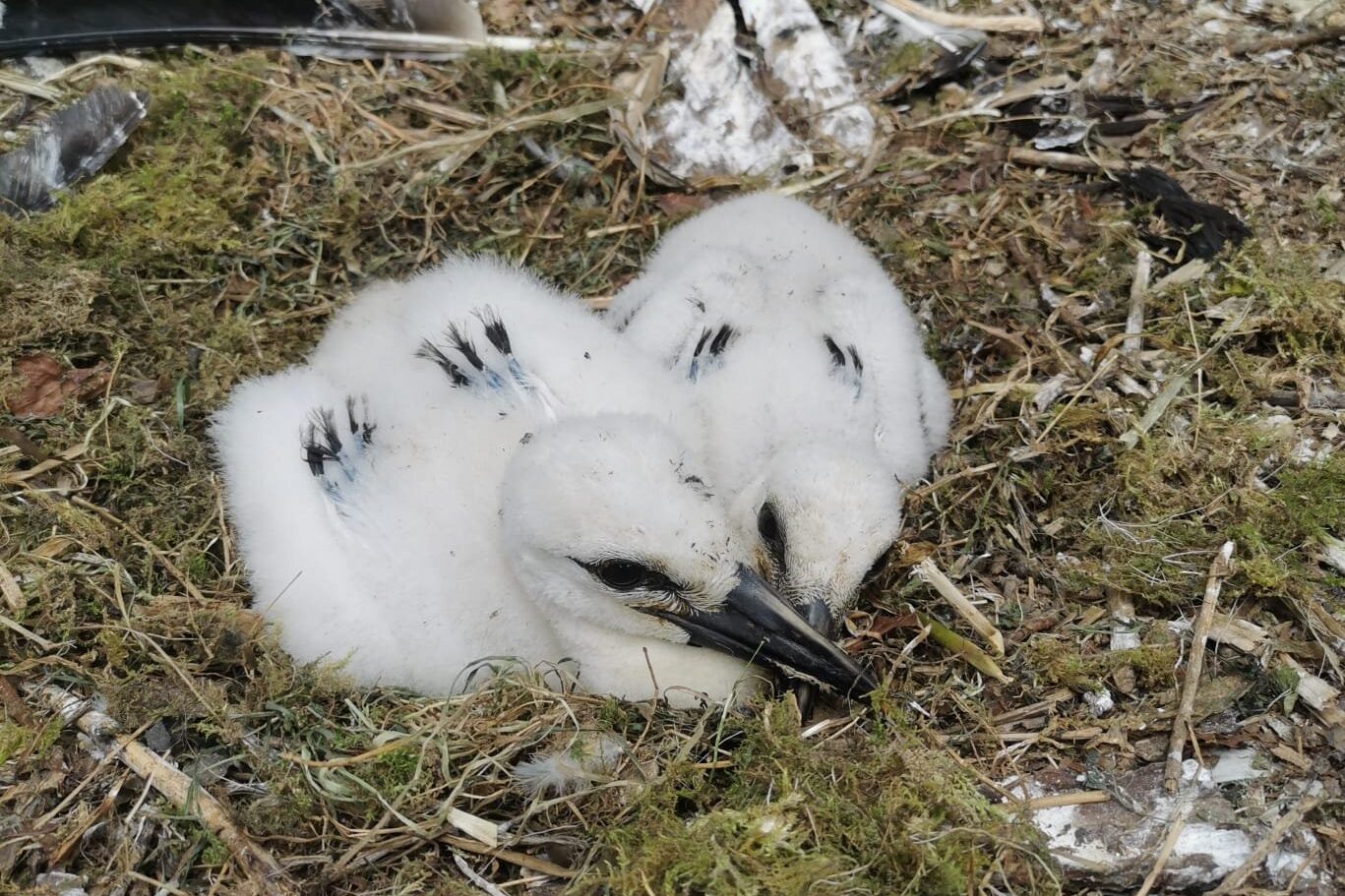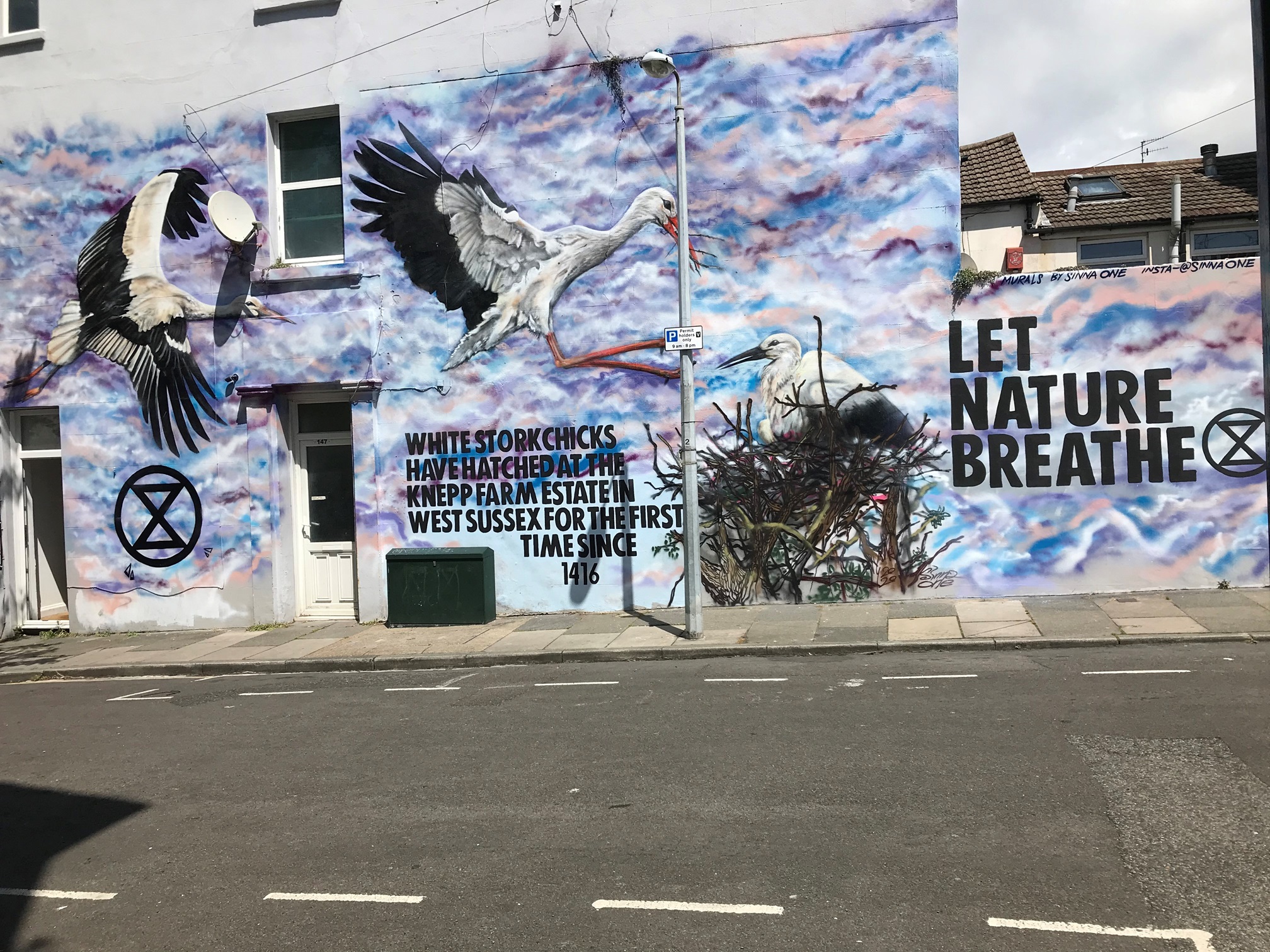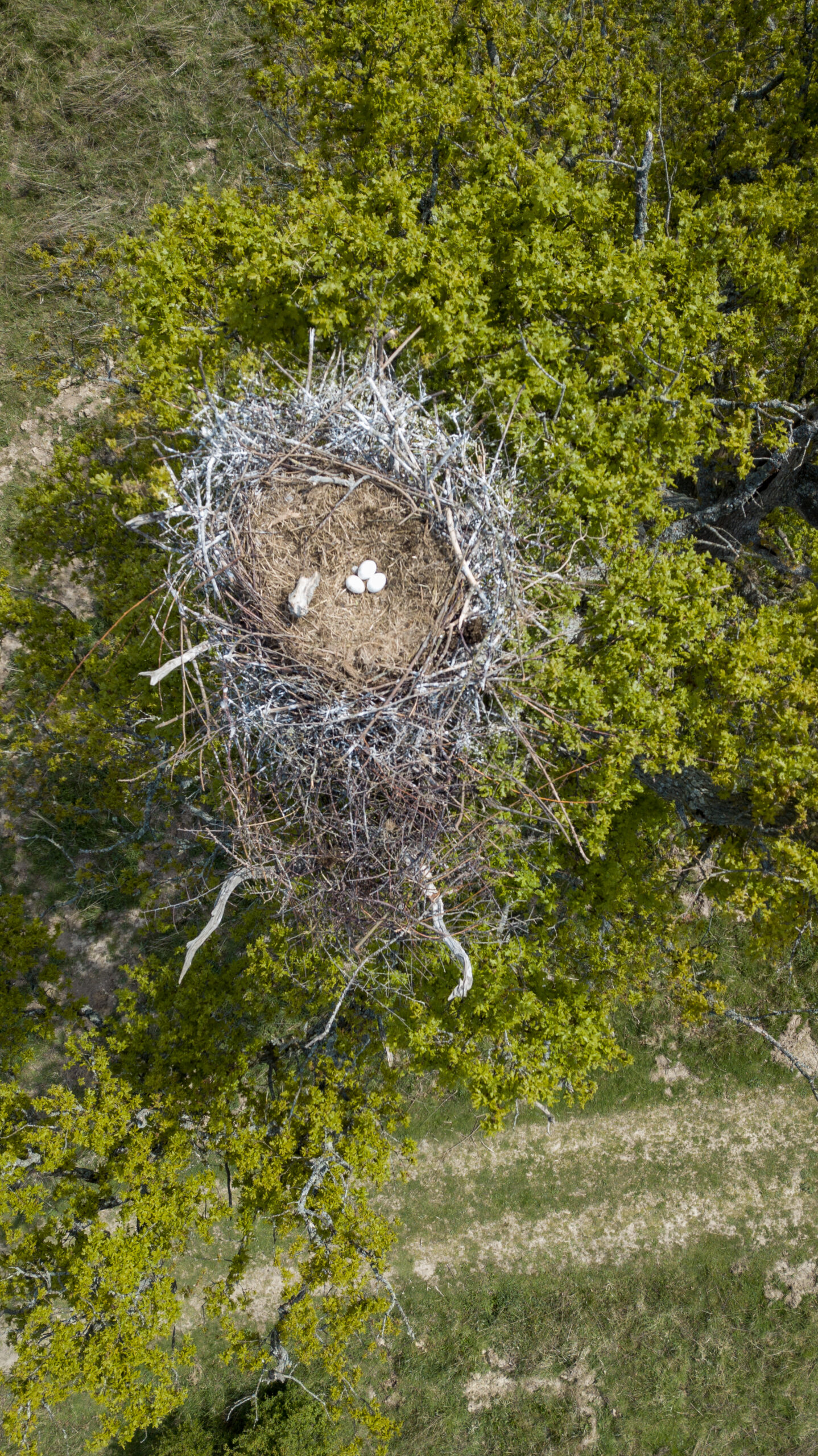How does it work?
The idea to bring back white storks to Britain originated with reintroduction experts Roy Dennis and Derek Gow.
Natural England and DEFRA agreed the project would not require a license, being – in essence – a reinforcement of a population of white storks that visit Britain every year from the continent. White storks live in colonies for safety in numbers and their failure to breed in the UK over the last few centuries is thought to be largely because there has been no nesting colony to provide security for visiting migrants.
Inspired by stork reintroduction programmes in Alsace, Sweden and elsewhere in Europe, the White Stork Project was born in 2016.
The founding birds are non-flying white storks from Poland, rescued following accidents with powerlines and roads, donated by Warsaw Zoo. Some of these birds are kept at Cotswold Wildlife Park. Every year, their offspring are brought to pens at Knepp Estate in West Sussex and Wadhurst Park in East Sussex where they spend a couple of weeks to develop site loyalty, before being released into the wild.
Other non-flying Polish birds form the nucleus of the two Knepp and Wadhurst colonies, breeding safely on the ground inside the pens. Their offspring also fly free, joining wild white storks on migration across Europe, sometimes as far as North Africa. They will hopefully return to Knepp and Wadhurst once they are 4-5 years old and ready to nest, bringing with them other wild white storks. Amazingly, some of our juveniles have already returned home to breed. Others, however, opt to over-winter with the non-flying birds at home.
Inspiring People
It’s been thrilling to see how successful the project has been in just a few years, how readily the storks take to being in England, that their homing instincts are developing, and that our free-flying captive-bred birds are already joining wild birds on migration, and bringing wild birds back with them to breed. Perhaps most exciting of all, has been the public reaction to seeing these birds back in our landscape, bill-clattering on the tops of trees, foraging in our wildlands and wetlands, and thermalling again in our skies.
Traditionally, storks are considered harbingers of hope, joy and rebirth. We hope their return to the UK will signal a transformation, a reconnection with nature that will enthuse and inspire others and help bring about the landscape restoration we so desperately need.
Our Story So Far
2016
- The White Stork Project partnership is formed
- First birds arrive at Knepp from Poland in December, after being cared for at Cotswold Wildlife Park
2017
- In January two wild storks are seen over Knepp
- The first project bird (Z9404) crosses English Channel and is seen in Brittany
2018
- Wintershall & Wadhurst receive their first birds from Poland
2019
- Project female (GB07) & a wild male build first wild nest in an Oak tree at Knepp
- Three eggs are laid but don’t hatch
- First cohort of twenty-four captive bred juviniles are released at Knepp – eight GPS tagged
- GPD tagged juvenile “Marge” successfully migrates to Morocco
2020
- Three nests built in the wild at Knepp
- Four chicks successfully fledge – the first for 600 years
- Second cohort of nineteen juveniles released at Knepp from CWP – eight GPS tagged
- Six tagged juveniles cross English Channel and two successfully make it to Morocco
2021
- Seven nests built in the wild at Knepp – our first on a building at Knepp Castle
- Fifteen chicks successfully fledge
- “Marge” starts to make her way back to the UK following her original route south but stops in central France
- Third cohort of twenty-seven captive bred juveniles released at Knepp
2022
- Forth cohort of thirty-three captive bred juveniles hatched at Cotswold Wildlife Park are released at Knepp
- Four chicks from Wildwood in Kent are also released at Knepp
- Eighteen chicks fledge from nine nests at Knepp
2023
- First ever ground nests built at Knepp from the rehabilitated non flying birds
- 26 fledge at Knepp, including three from two ground nests
- 3 fledge at Wadhurst Park
- 33 captive bred juveniles from Cotswold Wildlife Park are released at Knepp mid August
- 8 of the young are satellite tagged, by mid September, GBE4 from CWP has made it to Morocco and two others are in France and Spain
